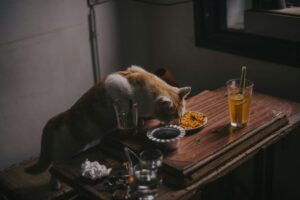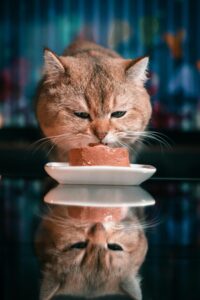Unlock the Secrets of Cat Food Labels: An Essential Resource for Responsible Pet Owners
Understanding how to read cat food labels is vital for ensuring that your cherished feline receives the nutritional balance essential for their optimal health and well-being. These labels offer more than just basic information; they are a comprehensive guide to the quality and composition of your cat’s diet. By becoming well-acquainted with these labels, you empower yourself to make informed choices that can significantly enhance your cat’s life, promoting better health and longevity.
One of the key elements to focus on when analyzing cat food labels is the specific vocabulary used. Terms like “complete and balanced” indicate that the product meets the nutritional standards set by the Association of American Feed Control Officials (AAFCO). Familiarizing yourself with these terms positions you to select foods that provide the essential nutrients your cat requires to thrive. This understanding empowers you to make dietary choices that cater to your cat’s unique health needs, ensuring they receive optimal nutrition.
When evaluating cat food packaging, you may frequently come across terms such as ‘natural’ or ‘organic’. While these labels can be enticing to consumers, they convey different meanings and implications regarding quality. For instance, ‘natural’ implies the absence of artificial flavors or colors but does not necessarily reflect overall food quality. In contrast, ‘organic’ signifies adherence to specific agricultural practices, often resulting in higher safety and quality standards, making it a favorable choice for health-conscious pet owners.
The AAFCO plays a pivotal role in establishing nutritional benchmarks within the pet food industry. Their standards ensure that any product labeled as ‘complete and balanced’ has met specific nutritional criteria tailored to various life stages of pets. Gaining a solid understanding of these labels is crucial for pet owners who seek to make informed decisions about their cat’s diet and health. By leveraging this knowledge, you can select the most suitable options for your kitty’s specific requirements.
Having a clear grasp of the information presented on your cat’s food label can greatly enhance your ability to make nourishing choices that promote their health and happiness. The insights you gain will empower you to choose high-quality foods that meet your cat’s dietary needs effectively and support their overall well-being.
 Essential Insights for Decoding Cat Food Ingredients: A Pet Owner’s Guide
Essential Insights for Decoding Cat Food Ingredients: A Pet Owner’s Guide
A critical aspect of understanding cat food labels involves a thorough examination of the ingredients list. Ingredients are typically listed by their weight before cooking, meaning that the first few items on the list represent the primary components of the food. This hierarchy is vital, as it provides you with insight into what your cat consumes on a daily basis, enabling you to make better dietary choices.
As obligate carnivores, it is imperative that the ingredient list for cats prioritizes protein sources. Look for specific proteins like chicken, beef, or salmon appearing at the top of the list instead of vague terms like ‘meat meal’. This specificity signifies a higher quality and more nutritious diet that aligns with your cat’s natural dietary requirements.
It’s equally important to identify and limit certain additives and fillers in your cat’s food. Ingredients such as corn, soy, or wheat gluten may add bulk to the food but offer minimal nutritional benefits for cats. Instead, prioritize options that incorporate whole grains and vegetables, as these can offer healthier alternatives and contribute to a well-rounded diet that supports your cat’s health.
Exercise caution regarding artificial preservatives commonly found in pet foods, such as BHA, BHT, and ethoxyquin. While these ingredients are often added to extend shelf life, they may not be the healthiest choice for your feline friend. Opt for foods that utilize natural preservatives like vitamin E (tocopherols) or vitamin C (ascorbyl palmitate) to ensure your cat maintains a high-quality diet.
If you come across unfamiliar or complex ingredient names, take the initiative to research them. Being well-informed about your cat’s diet is the best way to ensure that you make choices that support their health and well-being in the long run.
Evaluating Nutritional Content: Achieving the Perfect Balance for Your Cat’s Diet
Understanding the Guaranteed Analysis section on cat food labels is crucial for gaining insights into the nutritional content of the food. This segment usually specifies the minimum or maximum percentages of crude protein, fat, fibre, and moisture. Achieving the right balance of these nutrients is essential for maintaining your cat’s overall health and vitality.
Protein content is a primary consideration when selecting cat food. Cats require high levels of protein to flourish, so it’s vital to ensure that a sufficient amount comes from animal sources, which provide the essential amino acids necessary for their health. Avoid foods that rely heavily on plant-based proteins, as these often lack the comprehensive range of nutrients that cats require for optimal well-being.
Carbohydrate content is another significant factor to weigh when choosing cat food. While some carbohydrates can offer benefits when included in moderation, they should not dominate the ingredient list, especially for cats susceptible to weight gain. Aim for foods that emphasize higher protein and lower carbohydrate levels, which support a healthy and balanced diet.
Essential nutrients, such as taurine, are crucial for your cat’s health. Taurine is vital for maintaining heart and eye health, and since cats cannot synthesize it naturally, it’s imperative to ensure that the food you select includes this essential component. Always check the label to verify that taurine is part of your cat’s diet.
Be observant of potential allergic reactions that may arise in cats due to specific ingredients or imbalances in their diet. Common allergens can vary, so monitoring your pet closely will help you identify any adverse reactions. If necessary, consider exploring hypoallergenic food options specifically designed for sensitive cats to ensure their dietary comfort.
 Essential Strategies for Selecting the Optimal Cat Food for Your Feline Friend
Essential Strategies for Selecting the Optimal Cat Food for Your Feline Friend
Choosing the perfect food for your cat involves much more than merely picking the product with the most attractive packaging. It requires aligning the nutrition with your cat’s unique needs and lifestyle. When making your selection, consider critical factors, including your cat’s age, activity level, and any specific health conditions they might have.
Customizing the diet according to your cat’s lifestyle can significantly impact their health and vitality. For instance, an active outdoor cat will likely need more calories and protein compared to a sedentary indoor cat. Being mindful of their daily activities will aid you in providing a diet that adequately supports their specific energy requirements.
Price does not always correlate with quality, so it’s essential not to be influenced solely by cost. Often, you may find yourself paying a premium for branding rather than genuine nutritional benefits. Understanding the significance of the ingredients and the nutritional breakdown is far more important than the price tag when it comes to your cat’s health.
Keep in mind that pet food brands frequently modify their recipes, sometimes subtly and other times dramatically. Staying informed about these changes will ensure that you are always aware of what is being served in your cat’s bowl. Regularly checking for updates from brands can help you avoid unexpected dietary shifts that may adversely impact your cat’s health.
Lastly, consulting with your veterinarian can provide personalized insights tailored to your cat’s specific health needs. A veterinarian can recommend appropriate foods that cater to dietary restrictions or health concerns, offering you peace of mind that your cat is receiving optimal nutrition for a happy and healthy life.
The Article : How To Interpret Your Cat’s Food Labels Appeared First On Unity Pets.
The Article Interpreting Cat Food Labels: A Quick Guide Was Found On https://limitsofstrategy.com


2 Responses
You’ve highlighted a crucial aspect of pet care that often gets overlooked. Understanding cat food labels not only impacts our pets’ health but also reflects broader themes in consumer education and responsibility. As pet owners, we are entrusted with the well-being of another life, and being informed is a significant part of that responsibility.
I really appreciate the emphasis you’ve placed on understanding cat food labels. It’s surprising how many pet owners might overlook this aspect of cat care. Just the other day, I was in the pet store, and I noticed so many brands boasting about being “grain-free” or “natural.” While those terms can sound appealing, I feel like they’re often used without much context.